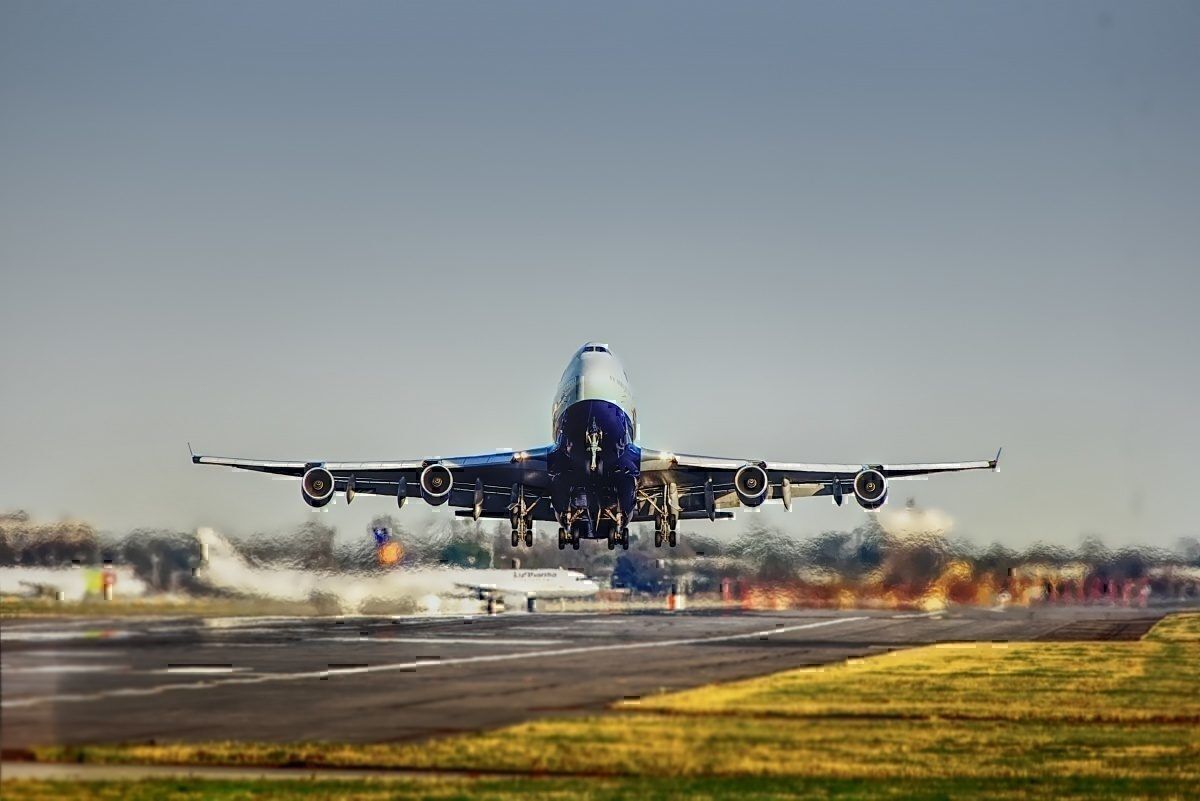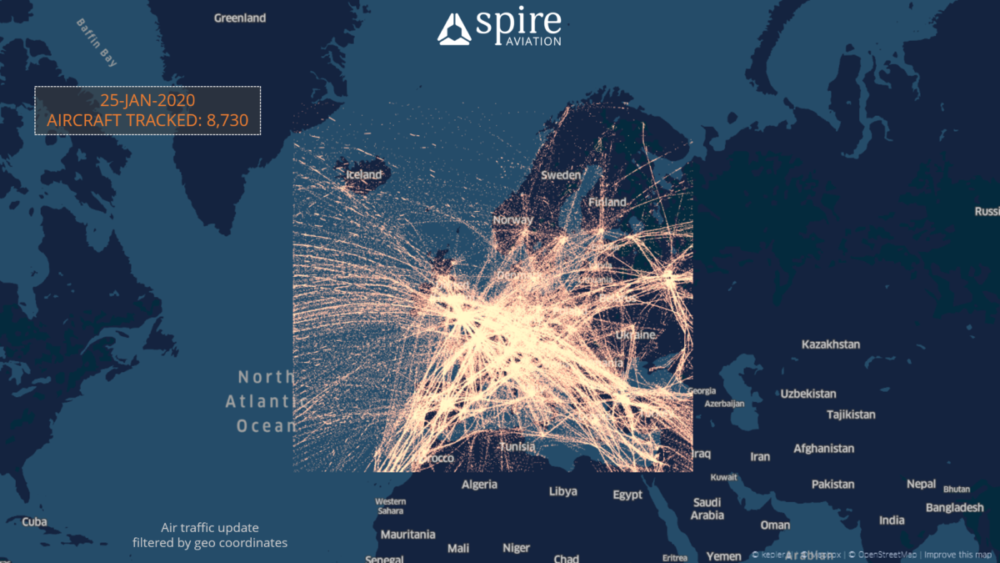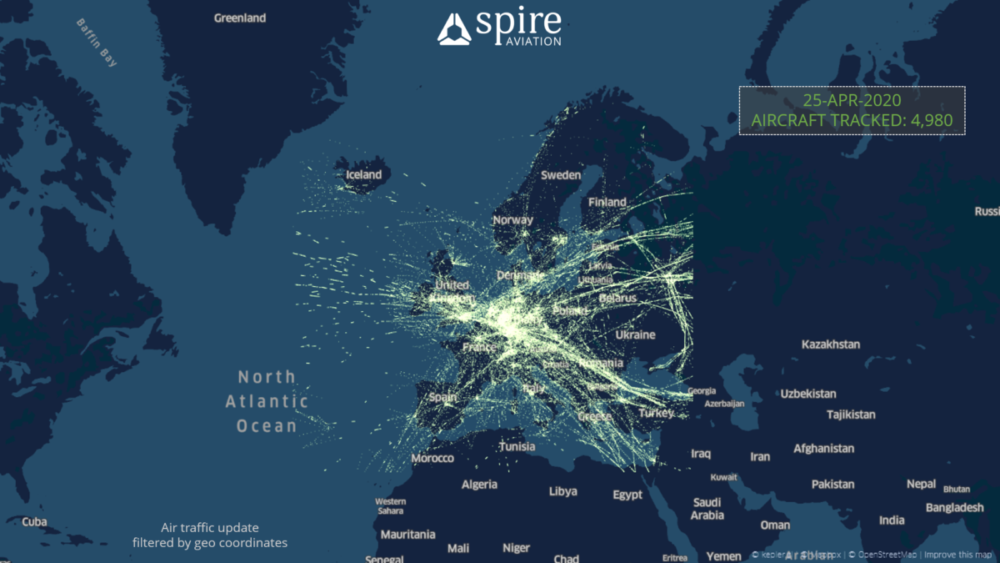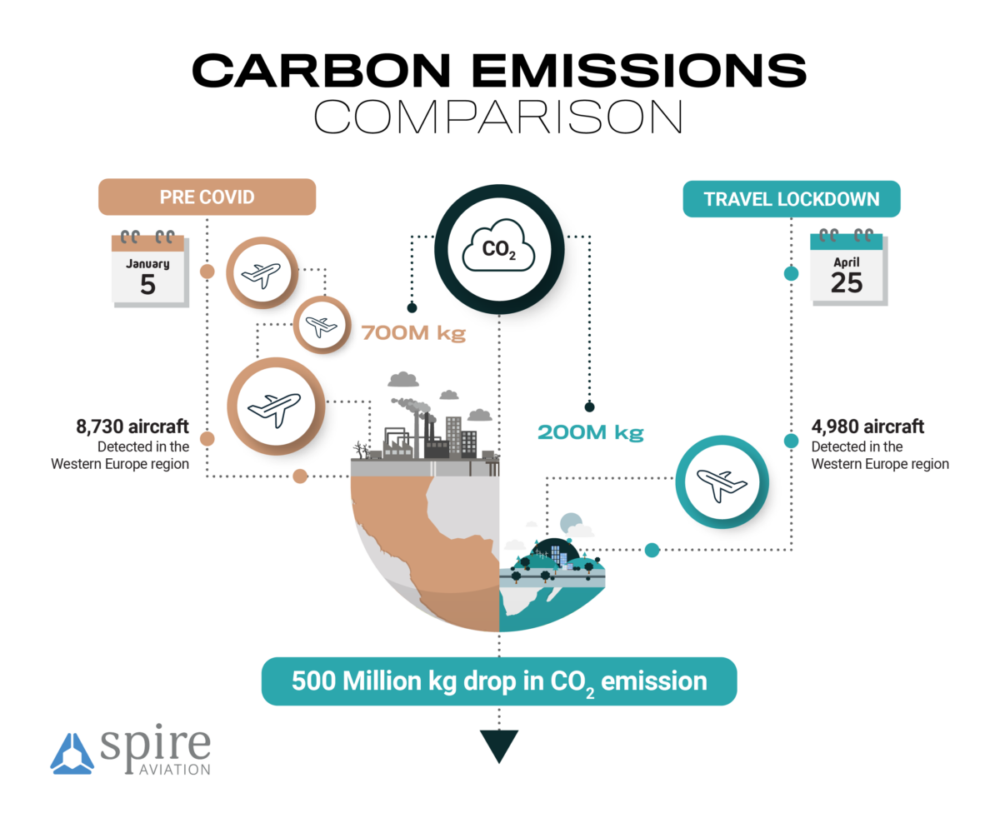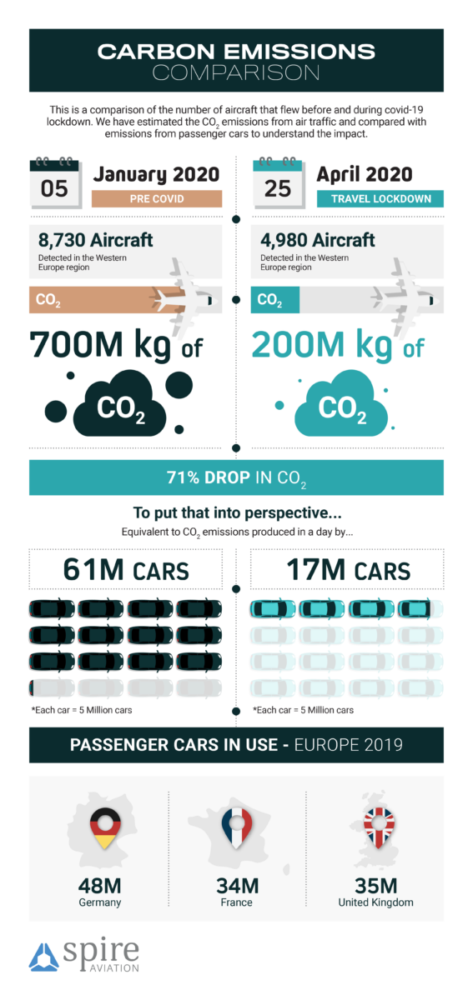One of the very few positives to come out of COVID has been the massive reduction in CO2 emissions. From fewer cars on the roads to the shutdown of factories, for a minute there, the world was looking like a much more green and pleasant land.
And it’s not just the land that has benefitted from lockdown either. Up in the skies, things have slowed down to such an extent that CO2 emissions have dropped by millions of kilos. Spire Global, a data and analytics company that collects data from space to solve problems on Earth, has shared with us some insight into the scale of this change.
43% fewer aircraft flying
On January 25th, an era that will likely become known as ‘pre-COVID’, flights across Europe were operating just about normally. Spire Aviation, the flight tracking arm of Spire Global, registered a total of 8,730 planes crossing the airspace of the continent, a typical number for that time of year.
By April 25th, most of Europe had instigated a broad-reaching travel lockdown, forcing airlines to ground huge portions of their fleets and thousands of passenger services to be canceled. On this day, Spire Aviation tracked just 4,980 aircraft in Europe, a drop of 43% from the day in January.
Half a billion kilograms saved
This massive drop in air traffic brought about a sizeable drop in CO2 emissions too. Using air traffic data and statistics on emissions from aircraft and cars, Spire translated this change into something tangible.
Their data shows that a typical pre-COVID day in Western Europe would have seen some 700 million kilograms of CO2 produced. This is based on an average aircraft utilization rate of 10 flight hours. To put this into perspective, it’s equivalent to the daily emissions of some 61 million passenger cars.
During the low point, when aircraft traffic dropped by 43%, airlines were also changing their behavior of aircraft use. More small aircraft operated, fewer widebodies flew and inefficient quadjets were grounded. This, combined with shorter utilization hours, led to a drop in CO2 emissions of approximately 70%.
This is calculated to be some 500 million kilograms, or half a billion! Spire Aviation estimates that this is equivalent to taking 43 million cars off the road, more than all the cars in the UK put together.
The new normal
While these sorts of CO2 savings are not feasible to maintain long term, we can expect the new normal to bring with it a renewed aviation industry, leaner and greener than it was before.
Industry experts agree that it’s going to take two, three, perhaps even four years for air traffic to return to normal. Even then, many of the inefficient and fuel-hungry older aircraft have left the global fleet permanently, a move that will see airlines coming back with younger and more environmentally friendly operations.
Are you surprised at how much CO2 was saved during the worst of lockdown? Let us know your thoughts in the comments.

